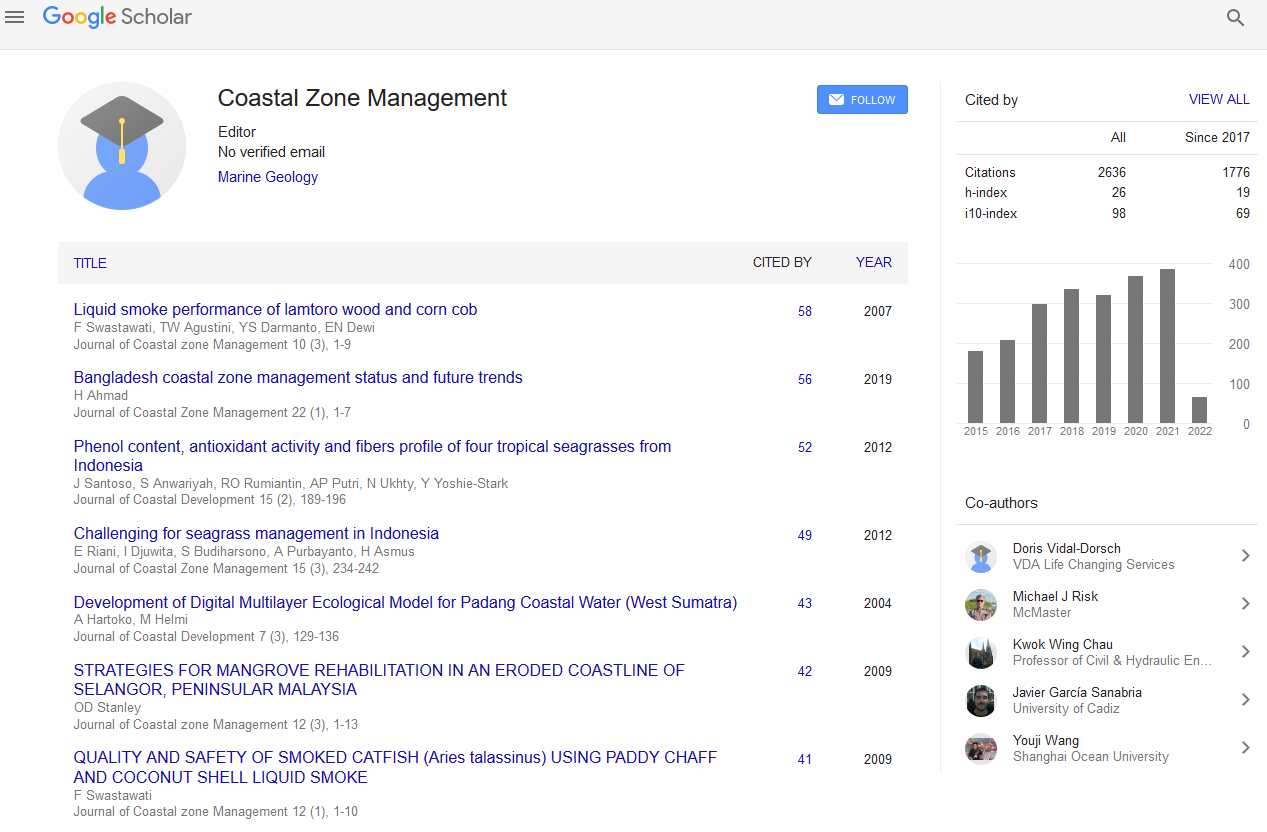Indexed In
- SafetyLit
- RefSeek
- Hamdard University
- EBSCO A-Z
- OCLC- WorldCat
- Publons
Useful Links
Share This Page
Journal Flyer

Open Access Journals
- Agri and Aquaculture
- Biochemistry
- Bioinformatics & Systems Biology
- Business & Management
- Chemistry
- Clinical Sciences
- Engineering
- Food & Nutrition
- General Science
- Genetics & Molecular Biology
- Immunology & Microbiology
- Medical Sciences
- Neuroscience & Psychology
- Nursing & Health Care
- Pharmaceutical Sciences
Abstract
Genetic structure of natural mangrove trees Avicennia marina in ecologically important areas of Kerala coast, Southern India- Sreekanth P M- Cochin University of Science and Technology
Sreekanth P M
Avicennia marina (Forsk.) Vierh. (Avicenniaceae) is the most widespread of all mangroves species and occurs in the IndoWest Pacific between the latitudes. It can survive in wide range of climatic, saline and tidal conditions. Its growth habit varies between shrub-forms in harsh, dry environments to trees up to forty meters tall in lush wet tropical areas. Avicennia species are the most widely distributed mangrove trees in the Kerala coastal area. The study represents the first comprehensive, large-scale population genetic investigation of Avicennia marina species. Its widespread use has constrained the distribution of species to small and isolated populations. The genetic structure within and between three natural mangrove growing forests of Kerala coast belonging to the districts of Kochi, Kozhikode and Kannur was investigated using Inter Simple Sequence Repeats (ISSR) markers to provide reasoned management and scientific conservation practices. The use of ten selective primer combinations on 60 samples (3 populations×20 trees) of Avicennia marina resulted in a total of 171 bands of which 84.5% were polymorphic. Gene diversity index (H) varied from 0.142 (Kochi) to 0.195 (Kozhikode). The mean gene diversity (HS) was 0.169 and the total gene diversity (HT) was 0.262. The mangrove Avicennia marina populations indicated large genetic differentiation (GST=0.3849) indicating that 38.49% of the total diversity was among populations while the rest 61.53% variation residing within the populations. The cluster analysis based on ISSR data from 72 genotypes of Avicennia marina (n=60) and Avicennia officinalis (n=12) generated a unique dendrogram. The Avicennia marina populations confirmed the tendency of individuals to group according to geographical localities. Avicennia officinalis 12 genotypes clustered separately in Kerala population. This significant correlation between NJ dendrogram, PCoA and structure indicated that long distance dispersal of seeds between populations had been rare. The gene flow estimates (Nm=0.79) indicated that natural mangroves of Kerala are in the process of differentiation due to genetic drift. These mangroves might have evolved separately as discrete pockets. Population might have the influence of locality factor, the principal factor governing the distribution and evolution of mangrove trees. Gene diversity within the population is comparatively higher than among population, establishment of on-site protection zones for Avicennia marina to reduce the impact of human activities would allow its habitats to increase in size through natural regeneration to reach effective population sizes.
Published Date: 2021-06-29;

